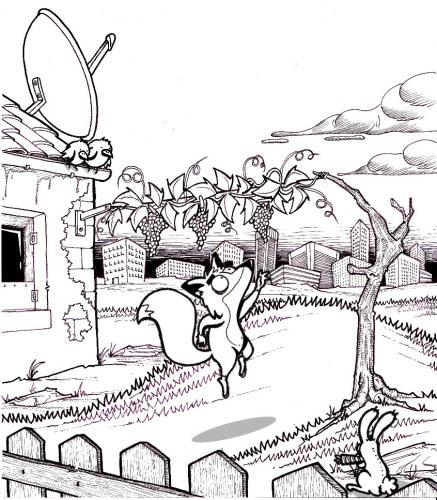
Cognitive dissonance, for those who don't know, is the ability to hold two conflicting ideas at the same time. An old example of this idea (and how the expression "sour grapes" came to be) is in the fable The Fox and the Grapes (ca. 620–564 BCE). In the story, the fox sees some high-up grapes and wishes to eat them. When the fox is unable to think of a way to reach them, he surmises that the grapes are probably not worth eating, as they must not be ripe or that they are sour. This example follows a set pattern: one desires something, finds it unattainable, and reduces one's dissonance by criticizing it. This of course is just one example. Overall, cognitive dissonance is holding an idea in spite of evidence to the contrary, and then trying to make peace with it, such as dismissing one idea (for instance, saying 'the grapes are probably bad anyway' or 'that second bits clearly not true')
As an example
I am a true Viking. Vikings died out more or less in the 11th century. It is now the 21st century
Clearly Vikings are still alive, and I am the last!

Evidence to the contrary!
The study specifically was targeting the 'Ground Zero mosque' controversy in the news. Everyone remember that? Was all there was on the news back in September? Anyway, they found that only one third of the people who had previous ly heard (and believed) the rumors regarding it changed their minds after overwhelming evidence to the contrary.
The false rumor used to this study was that Feisal Abdul Rauf the Imam that's backing the Islamic cultural center who is a terrorist sympathizer who's refused to condemn Islamic attacks on civilians this in spite of the fact that he DOES like here, go to 5:36). The problem with this little tidbit is the fact that there's NO EVIDENCE to support it.
The two professors Kelly Garret and Erik Nisbet found 750 people via online survey and exposed all of them to various rebuttals against the rumor, including different pictures next to the question. For some, no picture was including while in others, a picture of Rauf surrounded by people in western style business attire. Leading to 1 in 4 people changing their minds that the rumor was in fact false. But what actually is interesting about the study is how little it took to discredit the rest of the information. For instance, when the picture had the Imam surrounded by people in traditional Arab clothing, the rebuttal was ineffective.
In addition, having other texts in the rebuttal could also change opinion, such as Rauf's statement that America was partially to blame for harm it's policies have caused the Middle East, though still emphasizing that terrorism is not an answer to the problem.
This leads to a disturbing thought that tradition journalism (which tries to get 'both sides of a story') will actually hinder persuading people to the truth
Garrett and Nisbet did emphasize that, while the 750 people surveyed represented a broad range of adults, it was not a representative sample size adequate for all Americans . This means that the actual numbers may be taken as trends rather than as precise measurements...though this does little to help me sleep at night
So where's this leave us? The data SUPPORTS giving a one sided opinion, because any evidence to the contrary will have people keep their previous view. This leads to some difficult moral dilemmas as well, since most of the time the 'facts' are not truly established until later, and in the nation we support the 'all opinions are valid' stance.
Well, I could go into a heartfelt and deeply philosophical discussion about the nature of right and wrong and what should be done about this
Or, just end on a comic
I think I'll end on a Dilbert comic (credit to Scott Adams)

Everything is fine....
Thanks for reading
Mick




No comments:
Post a Comment